At Millennium Seoul Hilton Orangerie Int’l Buffet Restaurant
A month-long Sri Lankan Food Festival was opened at the Millennium Seoul Hilton’s international buffet restaurant, Orangerie, at noon today (Feb. 5, 2014) with the attendance of Ambassador and Mrs. Tissa Wijeratne of Sri Lanka, First Secretary (Commercial) Yasantha De Silva Yaddehi, General Manager Eric Swanson of Millennium Seoul Hilton, Publisher-Chairman Lee Kyung-sik of The Korea Post, Vice President Lee Myung-hoon of Korea World Travel Fair, prizing-winning Korean Head Chef Hyo-nam Park of the Hotel, native Sri Lankan Senior Chef Agampodi Lakmal flown in from Colombo Hilton in Sri Lanka?as well as hundreds of Korean and international guests.
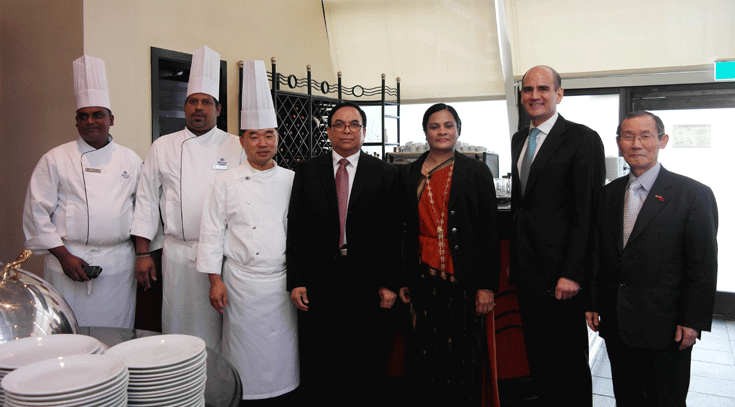
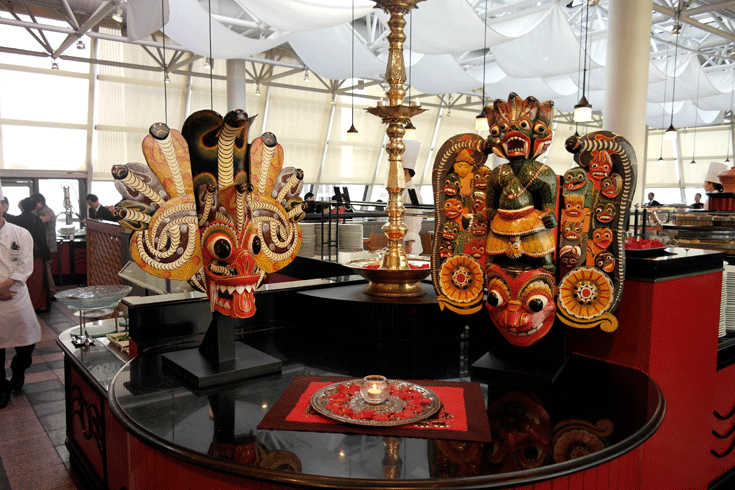
Congratulating the occasion and welcoming the guests, Ambassador Wijeratne spoke partly in Korean and English. He said: “Today brings a prime opportunity for food lovers to taste and flavors and experience the aromas of Sri Lankan cuisine here in Seoul. Sri Lankan food has a unique nature. Over time, it has evolved and brought in flavorful influences from abroad and from the homeland. The variety of spices, vegetables, meats and the use of clay chatties or cooking pots, all contribute to the complex yet exquisite dishes, from hoppers and kothu rots to sambals and curries. Today, I am happy that you will have the chance of tasting the delicious food of Sri Lanka.”
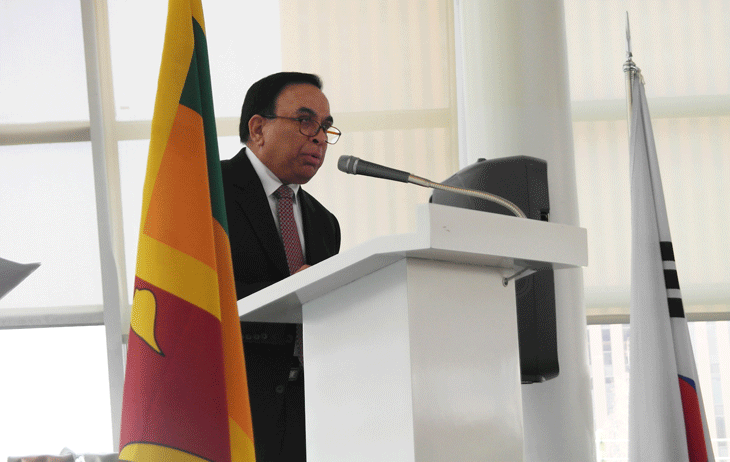
Then he said that in 2013 the number of the Korean tourists increased by 42% compared with 2013 with even a greater influx anticipated in 2014. “They have all explored the culture, nature and landmarks of Sri Lanka and I wish to invite you all to do the same and visit the ‘Wonder of Asia,’ Sri Lanka,” he said.

As the guests entered the Orangerie, they were courteously greeted by a lineup of managers and service personnel of the Restaurant as well as General Manager Swanson, Director of Operations Deeppak Subalah and F&B Promotion Manager Mark Shears.
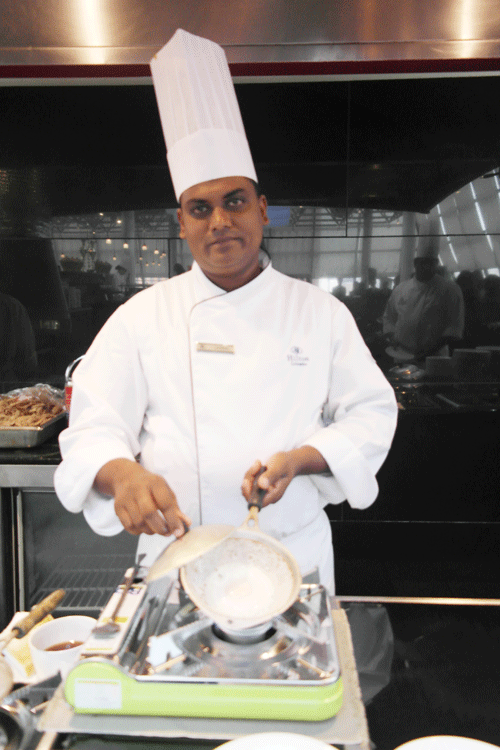
Among the unique Sri Lankan delicacies were hoppers, kothu roti, sambals and curries. The hopper was an eye-catcher as it looked exotic and unique to the Korean eyes and palates. It was a thin bowl made with the white albumen of an egg containing and protecting the soft-cooked yellow yolk at the bottom inside with partly spicy vegetable condiments. The white walls had a light sweet taste that contributed to the wonderful taste of the hopper.

Other traditional Sri Lankan delicacies included Seeni and Katta sambals; Ladies Finger, Oriental Chicken and Carrot & Green Chili salads; Sri Lankan Beef Stew; Dahil Curry; Lime Pickles; and Spicy Mango Chutneys. However, the chilies were not that hot for the Korean palates that were used to hot Korean kimchi.
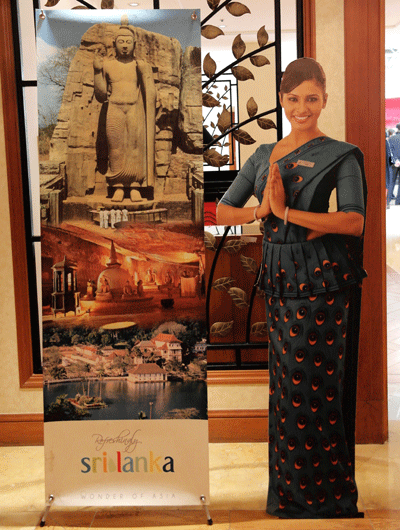
Sri Lankan cuisine has long been renowned for its spices. Since ancient times, traders from all over the world who came to Sri Lanka brought their native cuisines to the island, resulting in a rich diversity of cooking styles and techniques. One of the most complex cuisines in the world, the food of Sri Lanka uses bountiful local ingredients including some of the hottest peppers in the world.

